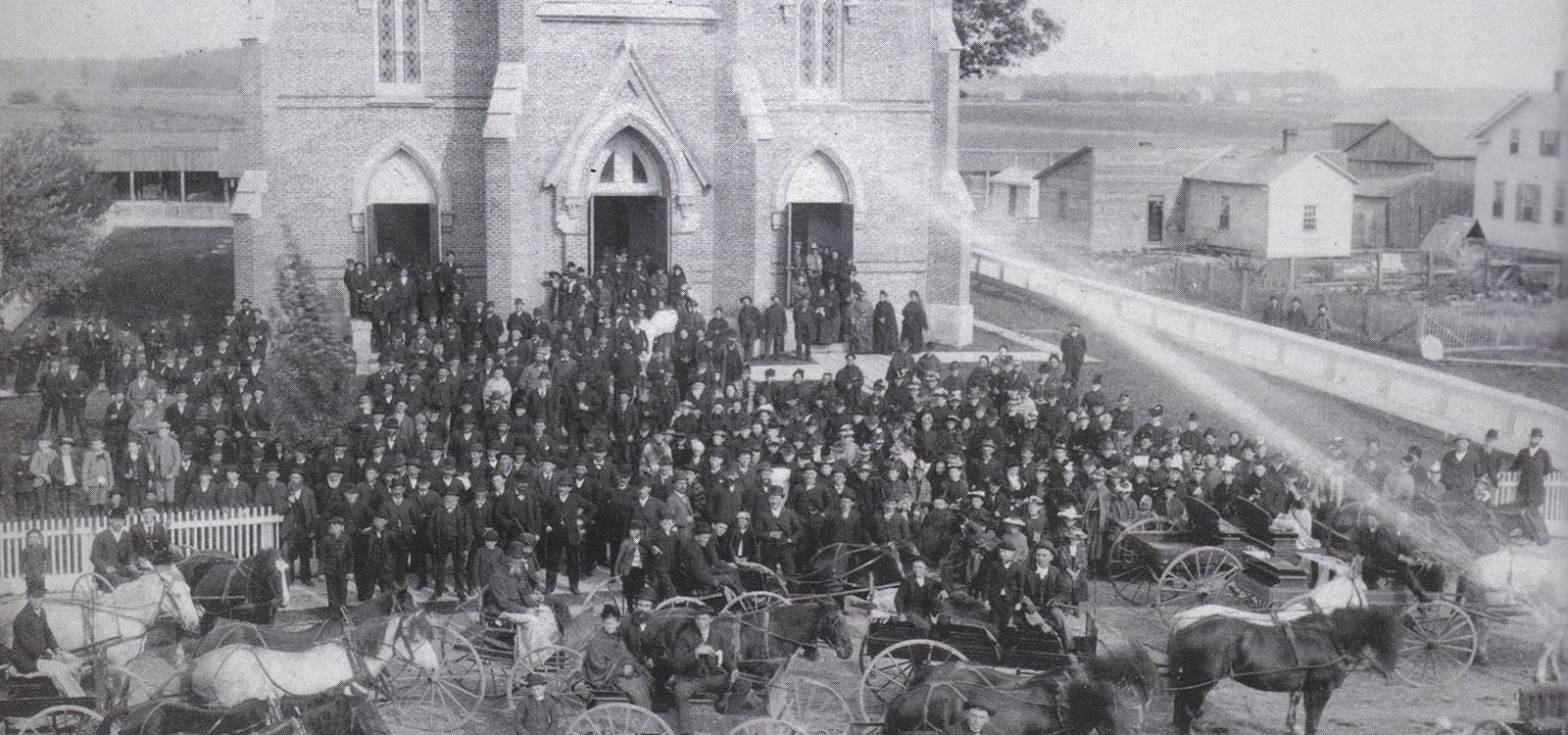
The history of St. Lorenz Lutheran Church is deeply intertwined with the story of Frankenmuth, Michigan, reflecting a rich legacy of faith, perseverance, and community. From its roots in the Franconian village of Neuendettelsau, Germany, to its establishment in the forests of Michigan, the journey of the St. Lorenz congregation is a testament to the vision and dedication of its founders. This narrative explores the origins of the church’s name, the challenges faced by the early settlers, and the enduring impact of their mission. Through the trials of their Atlantic crossing to the establishment of a thriving community, the story of St. Lorenz is one of courage, faith, and growth, continuing to inspire its members and the broader community to this day.
The Name St. Lorenz
People often ask where the name St. Lorenz (pronounced like the man’s name Lawrence) came from. In 1845, the original settlers of Frankenmuth brought that name with them from Germany, where it was the name of the Lutheran churches in three cities. The name comes from St. Laurentius, a Christian who was martyred (killed for his faith) in the third century A.D.
The Early History of Frankenmuth and St. Lorenz Lutheran Church
The early history of Frankenmuth is identical to the history of St. Lorenz Lutheran Church. Both began in the Franconian (Bavaria) village of Neuendettelsau in the mind of a humble, compassionate Lutheran pastor, Johann Konrad Wilhelm Loehe.
The Mission Colony Concept
Frederick Wyneken, a missionary “circuit rider” in the American Midwest, had sent a heart-rending plea to the Old Country for assistance. In response, Pastor Loehe conceived the idea of a “mission colony” in 1844, calling for dedicated men and women to immigrate to the wilderness forests of Michigan. There, under the guidance of a devoted mission pastor, they would demonstrate to Native Americans and others “wie gut und schoen es ist bei Jesu sein” (“how wonderful it is to live with Jesus”).
The First Volunteer: Lorenz Loesel
The first to answer Pastor Loehe’s call was his young servant, Lorenz Loesel, who had recently returned to the comfort and assurance of the Christian faith. He eagerly volunteered to become a “letter to the heathen” and urged others to join the mission congregation. The shepherd of this tiny flock was also a Franconian who had taught at Oxford University, Friedrich August Craemer.
The Journey to America
On April 20, 1845, they embarked from the seaport of Bremen on the sailing vessel Caroline. During the hazardous 50-day Atlantic crossing, they encountered icebergs and bad weather, seasickness, and smallpox. A 2-year-old child in their group, Margaretha Haspel, died of the dreaded disease. They arrived in New York on June 8 and proceeded to their final destination – a 680-acre tract of virgin forest on the banks of the Cass River. On August 18, the women, who had been staying in Saginaw, also arrived, and the community was established.
Naming Frankenmuth
Frankenmuth was so named by Pastor Loehe to remind the settlers of their homeland (Franconia) and the “muth” (courage) required to fulfill their mission destiny. The names of those pioneers are held in hallowed remembrance on the memorial plaque on the lawn of west St. Lorenz Church:
Early Settlement
Temporary shelter was provided by a quickly constructed “community house.” A similar structure served as a church and parsonage. Although too late in the year for planting, the land was parceled out and clearing the dense forests began. Seventy acres were dedicated to church use.
Expansion and New Immigrants
The following June, nearly 100 more immigrants arrived from the Rosstal – Gunzenhausen – Nürnberg area. The newly expanded congregation began construction of a larger, sturdier “church – school – parsonage,” which was dedicated on Christmas Day 1846. A replica of the modest structure stands in its original location as a tribute to those members of St. Lorenz.
Mission Trips and Community Growth
In addition to serving his congregation, Pastor Craemer also made mission trips by canoe to area Chippewa villages. Many Chippewa children came to live in the pastor’s home, where Mrs. Craemer also instructed them in the Christian faith.
Charter Congregation of the LCMS
Two years after its founding, St. Lorenz became one of the 14 charter congregations of the Lutheran Church – Missouri Synod and a participant in its worldwide mission program.
Present Day St. Lorenz
Frankenmuth has been blessed in countless ways since those early days. As the community grew, so also did St. Lorenz Church, with a present membership exceeding 4,000. More than 600+ children are now enrolled in our Christian School, which provides Christian education from preschool through junior high.